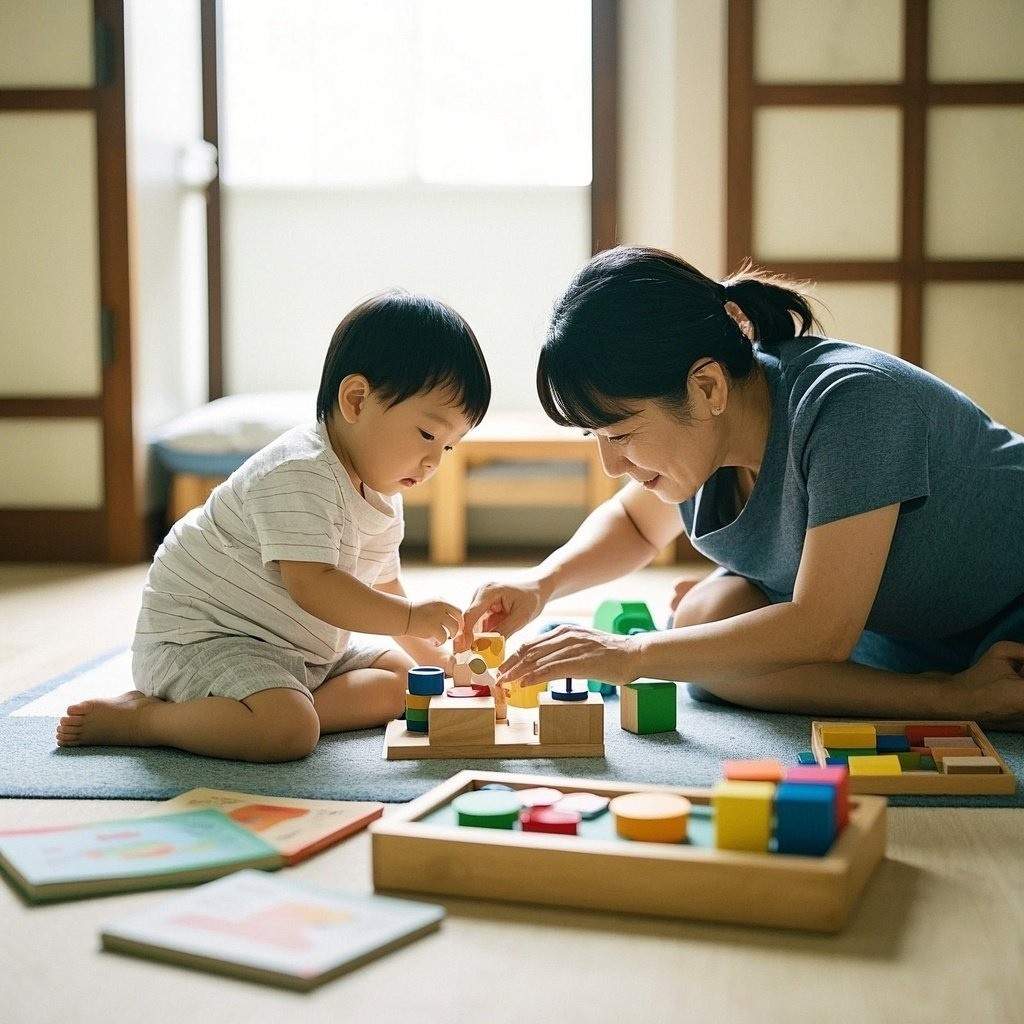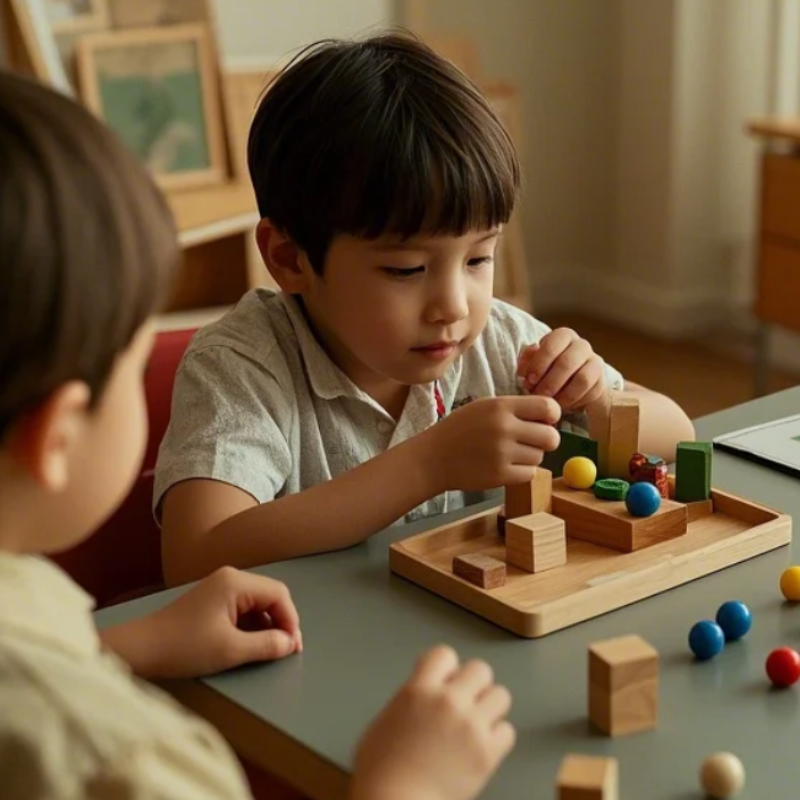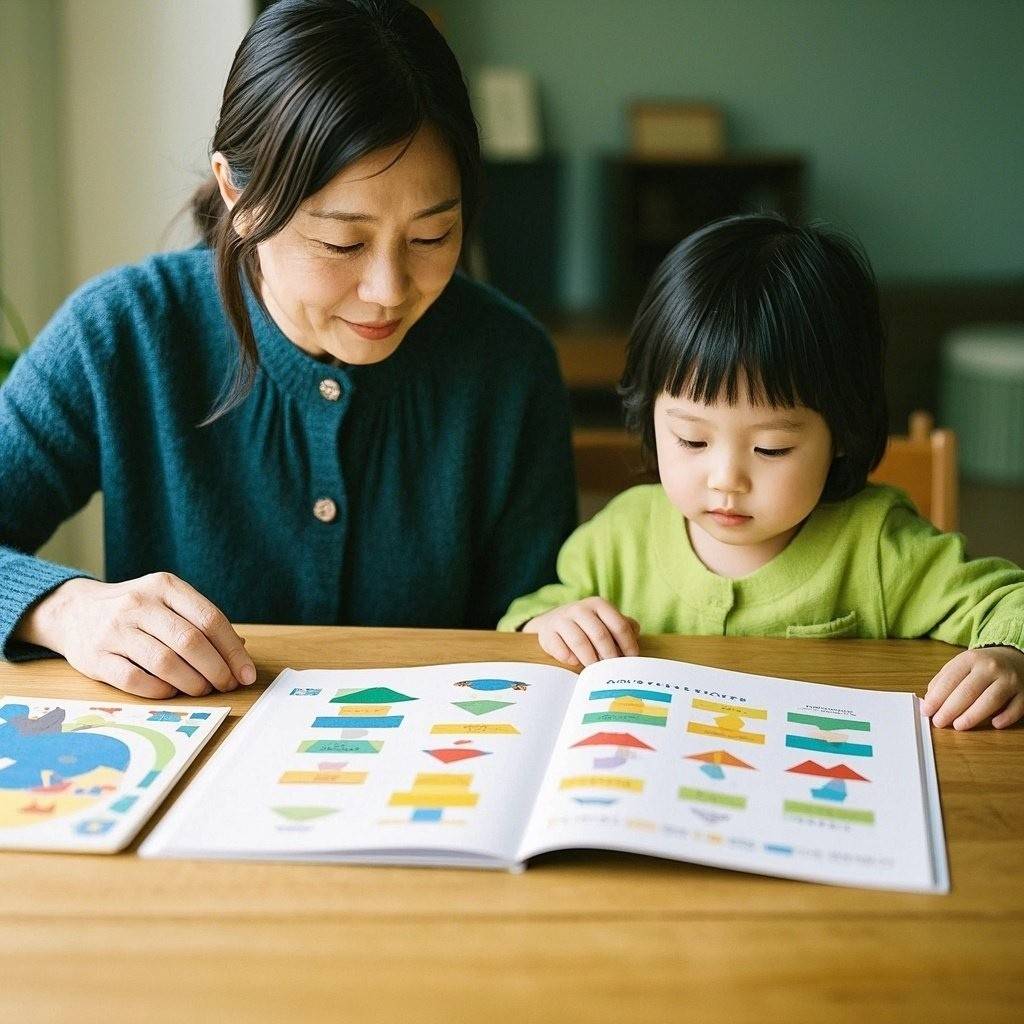Introduction
Early childhood education plays a crucial role in shaping a child’s social, emotional, physical, and cognitive development. During this formative stage, children acquire foundational skills that prepare them for long-term academic success and lifelong learning. Among the array of early childhood programs available, preschool and pre-kindergarten (often shortened to pre-K) stand out as popular options for families seeking to give their children a head start before entering the formal school system. Although the terms “preschool” and “pre-K” are sometimes used interchangeably, they have distinct differences in terms of age range, curriculum focus, duration, and overall objectives. Understanding these differences helps parents, caregivers, and educators select the most appropriate program to meet a child’s unique developmental needs and readiness for kindergarten.
In this comprehensive overview, we will explore the definitions of preschool and pre-K, discuss typical age requirements, examine curriculum focuses, outline standard program durations and hours, and evaluate how both options contribute to kindergarten readiness. By the end, you will have a thorough understanding of how each educational setting supports children in developing essential skills for a strong and confident start in their academic journey.
1. Definition of Preschool
Preschool is an early childhood education program designed to introduce young children—usually between the ages of three and four years old—to a structured learning environment in a developmentally appropriate manner. In many regions, the term “preschool” is used to refer to programs that cater specifically to this age group, though the nomenclature and exact age ranges can vary depending on local regulations and cultural context.
Key Characteristics of Preschool:
- Developmentally Appropriate Practices: Preschools generally place a strong emphasis on hands-on learning. Activities are often play-based, and children are given opportunities to explore, create, and experiment through guided play.
- Holistic Growth: Preschool programs aim to foster social, emotional, cognitive, and physical development. Rather than focusing solely on academic milestones, preschools create an environment that encourages curiosity and collaborative interaction among peers.
- Teacher-Facilitated Learning: Qualified early childhood educators guide classroom activities. These educators facilitate learning by introducing fundamental concepts in language, pre-literacy, basic math, and science, while also allowing ample time for imaginative play.
- Flexible Curriculum: Preschool curricula can vary widely between institutions, but the overarching goal is to help children acclimate to group settings and learn through a balance of structured activities and free play.
- Social Interaction: One of the most significant objectives of preschool programs is to develop interpersonal skills. Children learn how to share, take turns, respect boundaries, follow instructions, and work in small groups.
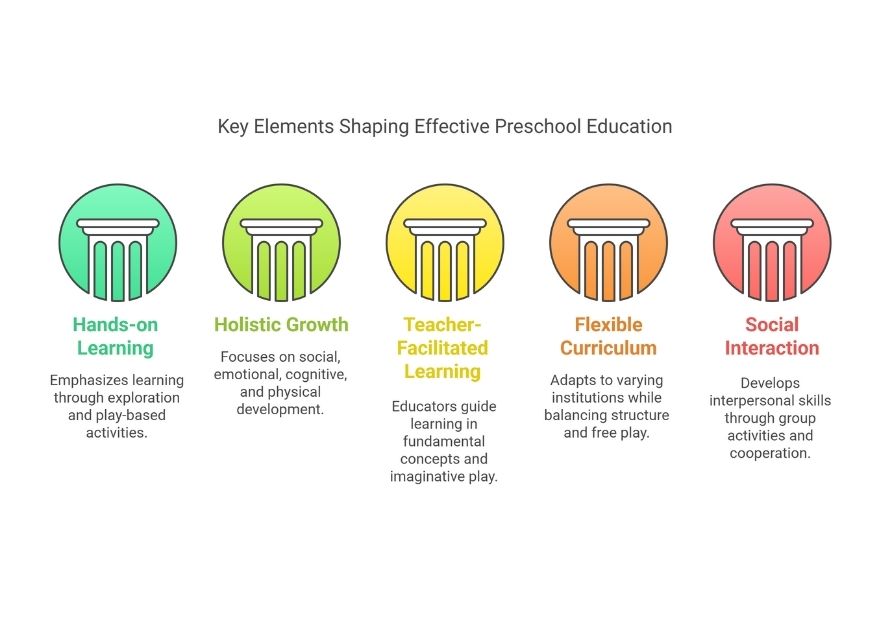
Preschool is typically the first structured environment a child may experience outside of the home or informal care settings (such as daycares run by family members or babysitters). It introduces them to daily routines, group activities, and a learning environment that seamlessly blends education with play.
2. Definition of Pre-K
Pre-kindergarten (pre-K) is also an early childhood education program, but it is usually intended for children who are slightly older and closer to the age of entering kindergarten—often around four or five years old. The concept of pre-K is designed to bridge the gap between preschool and formal schooling, serving as a more specialized, focused approach to prepare children for the academic and social demands of kindergarten.
Key Characteristics of Pre-K:
- Enhanced Academic Emphasis: While still play-based, pre-K programs typically incorporate a stronger academic element than most preschool curricula. Children engage with letters, numbers, shapes, and problem-solving activities in a slightly more structured manner than in preschool.
- Focus on Pre-Literacy and Pre-Math Skills: Teachers often devote more time to alphabet recognition, phonemic awareness, number sense, and foundational math concepts. This is done through engaging activities, storytelling, songs, and interactive games that make learning enjoyable and age-appropriate.
- School Readiness: Pre-K classrooms help children develop routines and behaviors necessary for success in a kindergarten setting. They practice following directions, working in groups, managing their belongings, and adjusting to more defined class schedules.
- Professional Educators: Like preschools, pre-K programs are led by educators specializing in early childhood development. The teacher-to-student ratio is typically low to ensure that each child receives individualized attention and support.
- Cognitive and Social Development: While there is a stronger academic focus compared to preschool, social and emotional development remain key components. Children continue to refine their communication skills, learn conflict resolution, and enhance their independence.
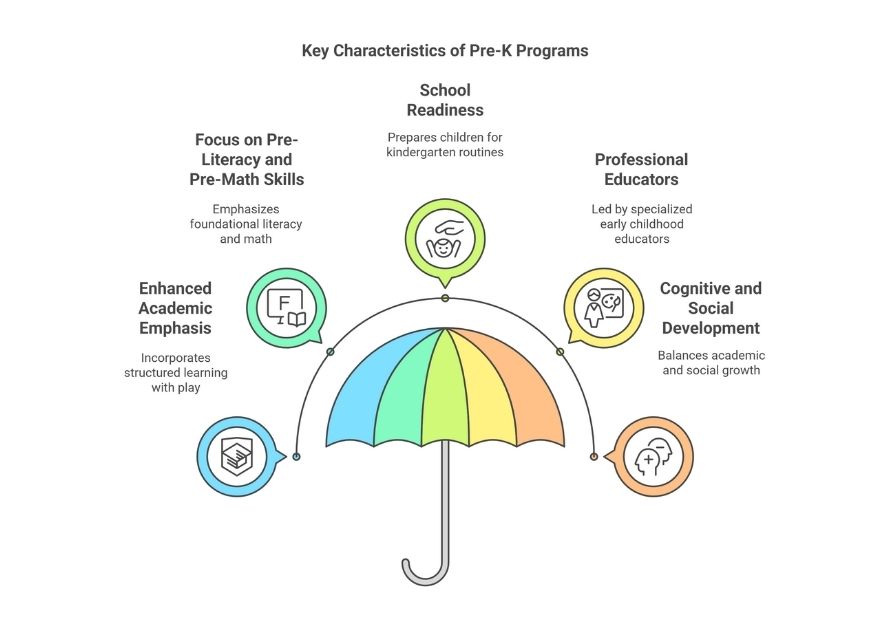
The ultimate aim of pre-K is to ensure a smooth transition into kindergarten by reinforcing emerging academic and social competencies. For many children, pre-K serves as a critical year of preparation that helps them adjust to the expectations of primary school.
3. Age Requirement
The appropriate age range for each program can differ based on local regulations, school district guidelines, and individual development. However, there are some common age brackets parents can expect:
- Preschool: Generally open to children between ages three and four. Some preschools accept children as young as two-and-a-half, provided they meet certain developmental milestones (such as toilet training) or social readiness indicators. Others may have a minimum age requirement of three by a specific date (e.g., September 1) to align with the school calendar.
- Pre-K: Typically geared towards children who are four or five years old, often the year before they begin kindergarten. Some programs may require that children reach the age of four by a certain cutoff date. Pre-K may also have more stringent enrollment requirements, emphasizing that children demonstrate certain readiness skills.
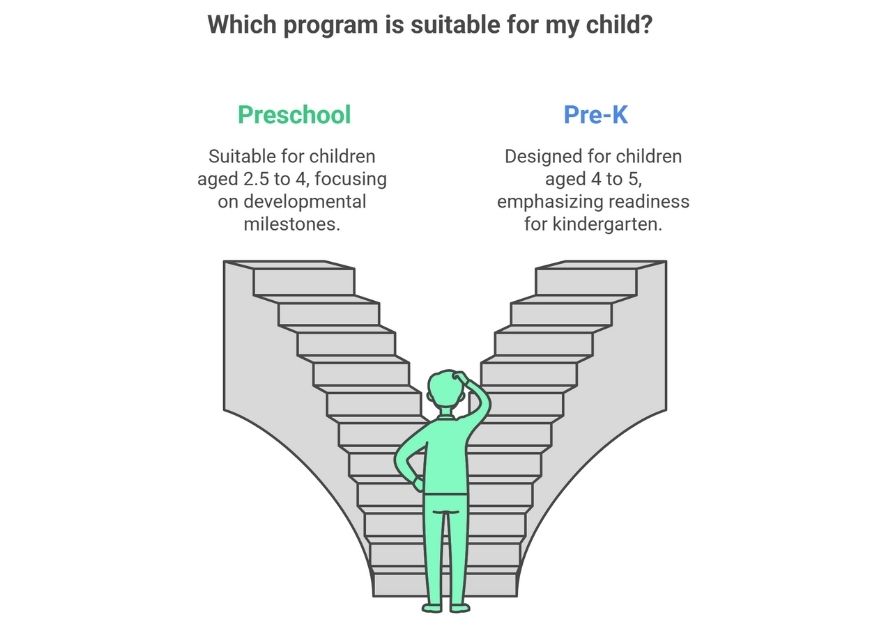
Parents should note that developmental readiness varies widely from child to child. While age guidelines offer a helpful starting point, it is advisable to consider each child’s social, emotional, and cognitive maturity. Some states offer publicly funded pre-K programs, particularly for children from low-income families or those at risk of falling behind academically, which can come with specific eligibility requirements.
4. Curriculum Focus
Preschool Curriculum
Preschool programs typically incorporate a variety of play-based learning experiences. The curriculum might include storytelling, arts and crafts, music and movement, sensory play, and outdoor exploration. Early math and literacy concepts are introduced incidentally through counting games, songs, and books. The curriculum is designed to cultivate a broad range of skills—fine and gross motor abilities, language and communication, emotional self-regulation, and social interaction. Instead of formal assessments, teachers use observational strategies to track each child’s progress and adapt activities to individual developmental levels.
Pre-K Curriculum
Pre-K programs typically feature a more structured curriculum than preschool. Lessons often incorporate daily routines focused on alphabet recognition, letter sounds, vocabulary building, numerical operations (like basic addition and subtraction), pattern recognition, and science experiments suitable for a four- to five-year-old. These academic components are balanced with social and emotional skill-building activities, group projects, dramatic play, and circle time discussions. While it remains child-centered, pre-K instruction aims to cultivate pre-literacy and pre-math skills more deliberately, setting children up for a smoother transition into kindergarten’s more rigorous academic environment.
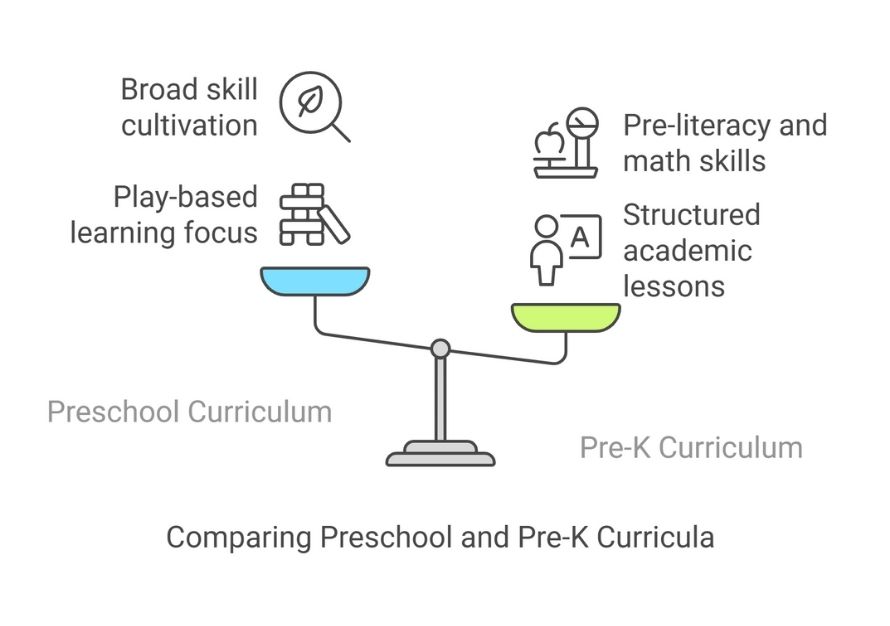
5. Duration and Hours
Early childhood education programs can vary in length and scheduling based on each institution’s policies and a family’s needs:
- Preschool:
- Half-Day Programs: Many preschools operate for about three to four hours per day, often in the morning or afternoon. This schedule can be beneficial for younger children who may still need naps or have shorter attention spans.
- Full-Day Programs: Some preschools offer extended hours that run similarly to a standard school day (e.g., 8:00 AM to 3:00 PM) to accommodate working parents. These programs include lunch and rest time, as well as additional play or learning activities.
- Pre-K:
- Full-Day Emphasis: Pre-K programs often mimic the structure of kindergarten, frequently running for six or more hours daily. This encourages children to adapt to a routine that more closely resembles the standard school day they will experience in the near future.
- Flexible Scheduling: While full-day pre-K is common, there are also part-day options. Depending on community resources and parental choice, families can select the schedule that best matches their child’s needs.

In both preschool and pre-K settings, the overall duration of the program might range from a few months to the entire academic year (often corresponding to the local public school calendar). Many families consider factors like cost, availability of wrap-around care (before- or after-school programs), and the child’s individual developmental stage when determining the best option.
6. Readiness for Kindergarten
Early childhood education is a stepping stone to formal schooling, and preschool and pre-K both aim to bolster children’s readiness for kindergarten. Each program offers distinct benefits:
- Preschool’s Role in Readiness:
- Social Foundations: By attending preschool, children learn crucial social skills such as sharing, turn-taking, and collaboration. They begin to comprehend group norms, classroom rules, and the dynamics of interacting with peers and adults outside their immediate family.
- Exposure to Routine: The transition from a home setting to an organized learning environment can be significant. Preschool gradually eases children into the concept of structured days, group activities, and guided learning.
- Language Development: Through guided conversations, songs, and read-aloud sessions, preschoolers expand their vocabulary and learn essential pre-literacy skills.
- Curiosity and Independence: Encouraging exploration and self-directed play fosters a love of learning and a sense of autonomy.
- Pre-K’s Role in Readiness:
- Academic Focus: Pre-K specifically targets the development of literacy and math readiness. Children practice writing their names, recognizing letters and corresponding sounds, identifying numbers, and understanding number sequences.
- Advanced Social-Emotional Skills: Collaboration on group projects, problem-solving exercises, and conflict resolution are emphasized, helping children build confidence and emotional maturity.
- Structured Classroom Routines: Pre-K settings often follow a schedule more akin to kindergarten, including designated times for reading, math exploration, snack, rest, and recess. This familiarizes children with daily school routines.
- Critical Thinking and Early Problem-Solving: Teachers often incorporate STEM (science, technology, engineering, and math) activities that require children to observe, hypothesize, test solutions, and discuss results, promoting analytical skills vital for kindergarten and beyond.

Both preschool and pre-K contribute significantly to kindergarten readiness by nurturing a child’s curiosity, emotional resilience, social competence, and foundational academic skills. Families may choose to enroll their children in both a preschool program (at around age three) and a pre-K program (at age four or five) to create a continuous, layered preparation for formal schooling.
Conclusion
Selecting the most suitable early childhood education program for your child involves understanding the specific goals and approaches that distinguish preschool from pre-K. While there is some overlap between these two settings, preschool generally caters to younger children and emphasizes holistic development through play-based learning. Pre-K, on the other hand, targets four- and five-year-olds, offering a more academically oriented curriculum aimed at preparing children for the transition into kindergarten. Each program provides vital opportunities for social, emotional, cognitive, and physical growth, but the choice will often depend on a child’s age, developmental milestones, family preferences, and local availability.
When deciding between preschool and pre-K, parents should consider the child’s individual readiness. Some children thrive in a preschool setting that gently introduces them to school routines and social interaction at ages three or four, while others benefit from an additional year of specialized pre-K instruction to solidify their foundational literacy and math skills. By carefully evaluating your child’s personality, maturity, and learning style, you can identify the ideal path that allows them to begin their academic journey feeling capable, excited, and prepared.
Ultimately, early childhood education programs—whether labeled as preschool or pre-K—serve as essential building blocks for a child’s future success in school and beyond. By offering structured routines, attentive instruction, and enriching play experiences, these programs help nurture well-rounded, curious learners who are ready to embrace the next stage of their educational journey. With the knowledge of how preschool and pre-K differ, parents and caregivers can make informed decisions that support each child’s growth, ensuring a strong foundation for years of formal schooling to come.



